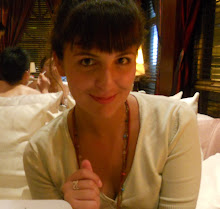This is the first time I have ever played on the bassoon, but I don’t think it will be my last. When I have hundreds of dollars to spend on raw cane, then I will consider picking up the bassoon. For now, I’m pretty content with spending $25 for a whole box of ready-made reeds.
Our video this week is a little different; it features highlights from my bassoon crash course, and it is less than 4 minutes long! All the more reason for you to take a quick peek. And in the interview, you will find out why I would need sell my car—and maybe a kidney—if I wanted to play the bassoon.
Interview
Tashina: When did you first start playing the bassoon?
Mike: I started to play the bassoon in 8th grade. So I’ve been playing for about 12 years. I started on the alto saxophone. And then in 8th grade, my band director said “Hey, we need a bassoon player for next semester, will you do it?” And I said, “Yeah, I sure will!”
Tashina: The bassoon is a “double reed” instrument. What does that mean?
Mike: Like on a clarinet or a saxophone, if you look at the reed, it’s just a single stick sitting against the mouthpiece. With the bassoon, you have two sticks that close against each other. And that’s why they call it the double reed, because you have two pieces of wood that are closing, rather than just one.
Tashina: Do you make your own reeds?
Mike: Yes, I do. I buy all the supplies, and then go through a couple days’ worth of process to put them all together. You get a raw piece of cane that’s about 6 inches long, and you gouge it, you profile it—which means you take out a bunch of the middle pieces of wood, and you make it thin enough that it will play—you fold it in half, tie it up, stick some wires on it, and clip it up. Yeah, it’s a labor-intensive process, but it’s pretty fun.
Tashina: How much do you think you spend a year on reed supplies?
Mike: Cane usually costs between $60 to $100 for a dozen pieces. It’s a lot of money. So, I’ll probably spend $300 or $400 a year to make reeds. It’s quite the investment.
Tashina: The bassoon probably has the most intricate key system of all woodwinds, why is that? Would it be possible to modernize the key system and make it more simplistic?
Mike: You know, I’m not really sure. This is a part of the Boehm system. So kinda like the clarinet has the Boehm system. And this is actually a modern version of an older system. So I don’t know how much they could simplify it any further. But as far as I’m concerned, it’s pretty good where it’s at.
Tashina: Why is it so complex, like you don’t see saxophones with that many keys and having one finger playing multiple keys and such?
Mike: I think part of it is just the acoustics of the instrument—some of the physical properties of it. Between that and the way that the reed interacts with the instrument, if you didn’t have some of the octave vents for the thumbs, certain notes wouldn’t speak very well. It’s just part of the design of the bore of the instrument on the inside.
Tashina: Is it possible to play the bassoon standing up, or do you have to be sitting down?
Mike: It’s definitely possible to stand up. When I bought my bassoon, it came with a neck strap, and it would attach to a ring on the end joint. A lot of the professionals will install what is called a balance hanger. And it’s kinda about 6 inches long, and it attaches to that ring on the lower half of the bassoon. And it has several holes in it so you can have a little bit better balance, so it’s not weighing down on your hand as you play. It’s kind of a heavy instrument, so standing up is a little more cumbersome.
Tashina: I don’t often hear people speaking ill of the bassoon, many people are quite fond of it. What’s to love?
Mike: I dunno, it’s kind of a funny instrument. It’s got a beautiful, warm tone to it. And it’s just very mellow. It’s generally not a harsh sound, and it’s not one that’s real piercing. You know how oboe—especially in the high register—can get kind of a piercing tone to it, it’s still beautiful, but it gets a little bit more piercing. The bassoon doesn’t really do that. You go up into the high register, and it’s still kind of that same sweet feeling that you get through the rest of it. And I think that’s probably part of the reason why people like it so much.
















